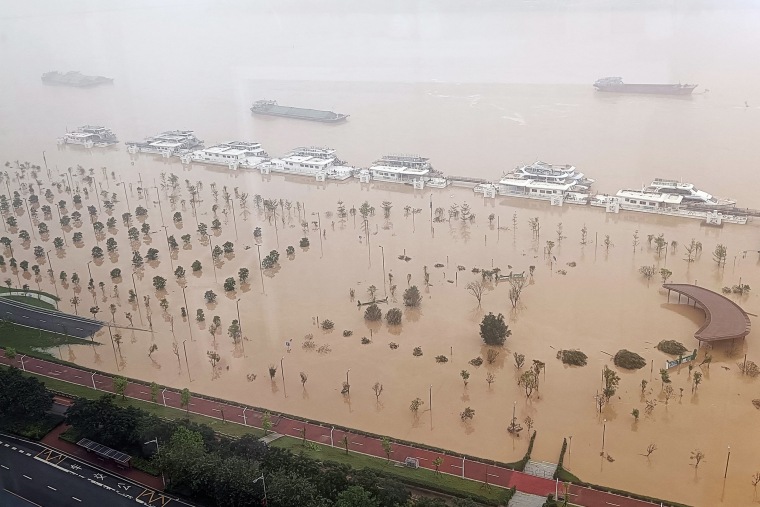QINGYUAN, China — Floods swamped a handful of cities in southern China’s densely populated Pearl River Delta following record-breaking rains, sparking worries about the region’s defenses against bigger deluges induced by extreme weather events.
The province once dubbed the “factory floor of the world” is prone to summer floods. Its defenses against disruptive floods were severely tested in June 2022 when Guangdong was pounded by the heaviest downpours in six decades. Hundreds of thousands of people were evacuated.
Since Thursday, Guangdong has been battered by unusually heavy, sustained, and widespread rainfall, with powerful storms ushering in an earlier-than-normal start to the province’s annual flooding season in May and June.
In Qingyuan, a relatively small city of 4 million, some residents counted their losses from the flooding. Others worried about more serious disasters in the future.
“My rice fields are fully flooded, my fields are gone,” Huang Jingrong, 61, told Reuters.
Huang was taking shelter under an overpass with a few other farmers from his village, alongside an assortment of personal belongings they managed to save, including a washing machine.
“I won’t be making any money this year, I will be making losses,” he told Reuters, estimating his losses at about 100,000 yuan ($13,806).
“What can we do? We won’t get reimbursed for our losses.”

Over the weekend, a number of waterways in Guangdong overflowed including the river near Huang’s village, where floodwaters have reached the second story of houses after washing out paddy and potato fields.
In other parts of Qingyuan, rescuers tackled neck-high waters to extract residents including an elderly lady trapped in waist-deep water in an apartment building.
Others with nowhere to go remained on the upper floors of their houses, waiting for the waters to recede as friends delivered food by boat.
Before 2022, it rarely rained as heavily as it does now, and the floodwaters were never as high, said another Qingyuan resident, Lin Xiuzheng, who worked in online retail sales.
Weather events in China have become more intense and unpredictable because of global warming, scientists say, with record-breaking rainfall and drought assailing the world’s second-largest economy, often at the same time.
Precipitation records for April have already been broken in many parts of Guangdong, with the cities of Shaoguan, Zhaoqing and Jiangmen to the west and north of Guangzhou also half-submerged in floodwaters.
Swollen rivers
No fatalities were reported, although 11 people in the province were still missing by Monday morning, state-owned Xinhua News Agency reported without giving further details.
Across the province, 36 houses collapsed while 48 were severely damaged, resulting in a direct economic loss of nearly 140.6 million yuan, Xinhua reported.
Two companies in the province told Reuters there had been no immediate impact on business or supply chains.
“Everything’s running as usual and everyone got to work,” said a person who answered the phone at Camelot PCB, a print circuit board company that supplies Tesla and other electric vehicle makers.
Polyrocks Chemical, a plastics company that supplies technology giants such as Apple, Huawei, and Samsung, also said its operations were not affected.
But many rivers remained swollen on Monday at levels above safety thresholds, with rainfall in recent days two to three times more than what is normally seen at this time of the year.
The intense convective weather in southern China was caused by a stronger-than-normal subtropical high, a semi-permanent high-pressure system circulating north of the equator.
The stronger subtropical high led to warmer temperatures that drew in more moisture-laden air from the South China Sea and even the Bay of Bengal, Chinese meteorologists said, resulting in intense precipitation.